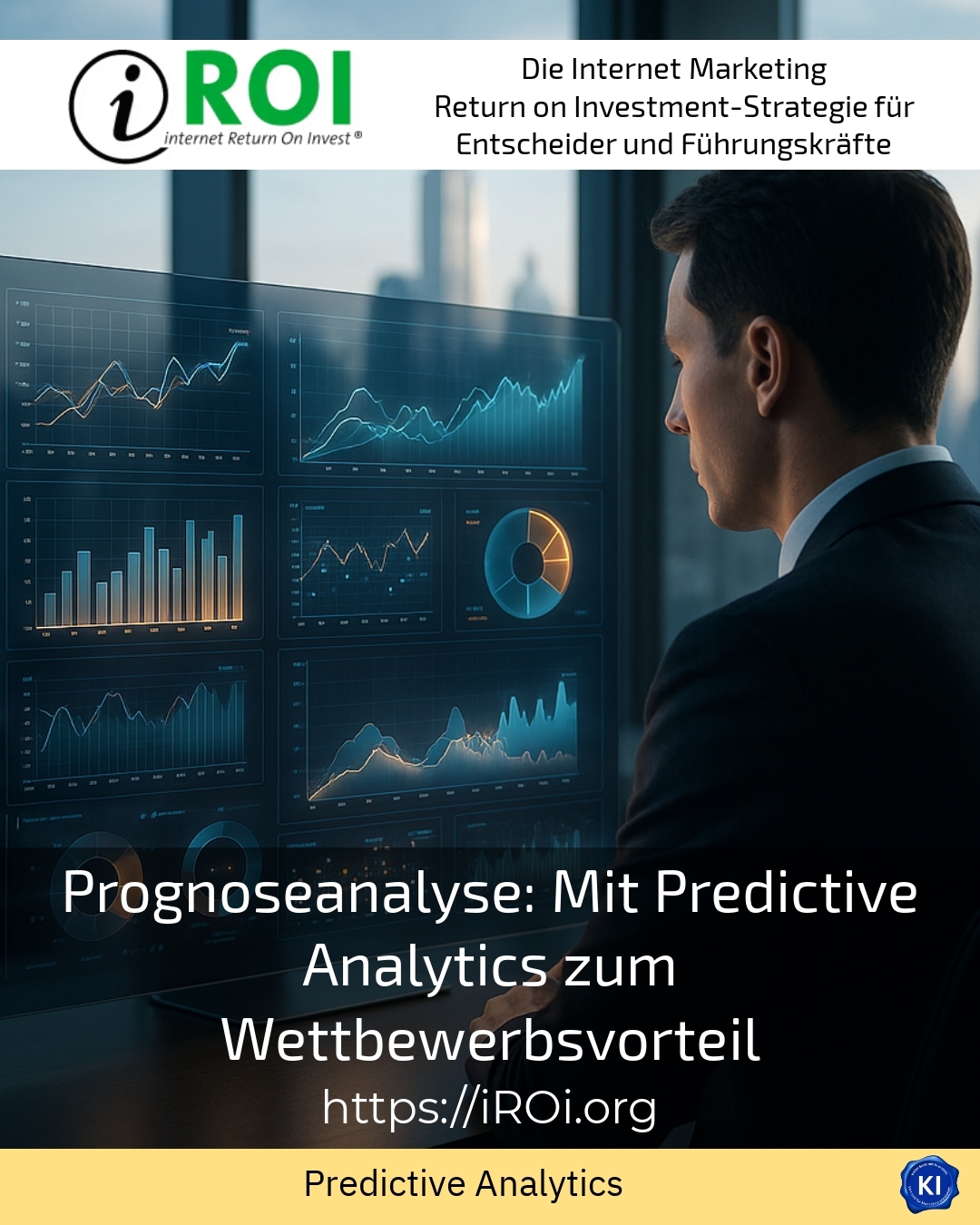A new perspective on forecast analysis
Forecast analysis is no longer a dream of the future, but a decisive tool in competition. Companies in various sectors are increasingly using it to make data-based decisions and optimise processes. The main aim is to derive meaningful predictions for future developments from historical data. This enables risks to be reduced, processes to be designed more efficiently and new opportunities to be better recognised.
Many organisations come to me with questions about how they can implement forecast analysis in their day-to-day work or how they can benefit from its potential. The spectrum ranges from more precise resource planning and early risk identification to the optimisation of customer offerings. I often accompany projects in which forecasting models are used as an integral part of strategic planning. They help to sharpen the focus on what is to come and to formulate recommendations for action without making promises of effectiveness.
Benefits of forecast analysis in practice
The benefits of forecast analyses are wide-ranging and can be seen in very different areas of the company. The ability to recognise potential challenges at an early stage and take appropriate countermeasures is particularly valuable. For example, targeted analyses of machine data can be used to predict impending failures, which can significantly reduce downtimes.
Forecast analysis also provides relief in the area of customer relations. By understanding individual purchasing patterns, offers can be designed in a much more targeted manner. This often leads to increased customer satisfaction and strengthens loyalty.
Companies are also improving their strategic planning. Instead of relying on gut instinct, they use data-based forecasts to predict market trends and deploy resources more effectively. This creates competitive advantages that can pay off in the long term.
Examples from the industry
BEST PRACTICE at company XYZ (name changed due to NDA contract) The company uses forecasting analyses to precisely determine maintenance requirements based on historical production data. As a result, unexpected machine downtime was reduced by almost 30 per cent, which significantly increased operational efficiency.
BEST PRACTICE at ABC (name changed due to NDA contract) In sales, the company uses forecast analysis to better understand the purchasing behaviour of customers. This has made it possible to plan customised marketing campaigns and significantly increase the conversion rate.
BEST PRACTICE at DEF (name changed due to NDA contract) A logistics company uses forecast analysis to optimise its route planning. Weather and traffic data are incorporated into the models, resulting in significantly fewer delivery delays.
The role of forecast analysis in risk identification
Companies often report that they can better assess risks at an early stage with the help of forecast analyses. Whether it is about avoiding payment defaults or identifying security threats in IT systems - the analysis helps to recognise warning signals and initiate measures in good time.
One important aspect is the structured processing of large amounts of data. This makes it possible to detect patterns and anomalies in real time. This information provides decision-makers with valuable impetus to make the complexity of business processes more transparent and proactively address sources of error.
Industry-specific application scenarios
BEST PRACTICE at GHI (name changed due to NDA contract) In the financial sector, forecast analyses are used to better assess the creditworthiness of customers. This helps to minimise payment defaults and to base decisions on reliable data.
BEST PRACTICE at JKL (name changed due to NDA contract) A telecommunications provider uses forecasting analyses to detect unusual activities that indicate possible fraud attempts. This enables them to react promptly and reduce damage.
BEST PRACTICE at the company MNO (name changed due to NDA contract) In the healthcare sector, forecast analysis models help to better plan supply capacities and recognise bottlenecks at an early stage. This enables better patient care.
How forecast analysis will accompany companies in the future
Forecast analysis is not a one-off measure, but a continuous companion for strategic decisions. It provides impetus as to how new projects, product launches or market adjustments can be implemented based on data. Especially in times of high uncertainty, it is seen as an important anchor to support planning processes.
The focus is always on insights and recommendations that are based on transparent analyses and do not promise absolute truths. Working with forecast analyses enables companies to react more flexibly and derive sustainable benefits from the findings.
This form of support often creates trust and ensures that decisions are easy to understand. Many report how this has enabled them to improve their ability to act under changing market conditions.
My analysis
The use of forecast analyses is essential for maintaining an overview in complex markets and making better informed decisions. Companies that take this approach can not only reduce risks, but also recognise and exploit new opportunities. Trustworthy support during implementation plays a major role in successfully combining method and practice.
Forecast analysis helps you to act with control and foresight - not to know everything, but to make informed decisions. This ability is a valuable asset for companies of any size and in any industry, especially in today's world.
Further links from the text above:
[1] What is predictive analytics? - Advantages & examples
[2] Guide: Understanding & using predictive analytics
[5] Predictive analytics: definition, applications and examples
For more information and if you have any questions, please contact Contact us or read more blog posts on the topic TRANSRUPTION here.















